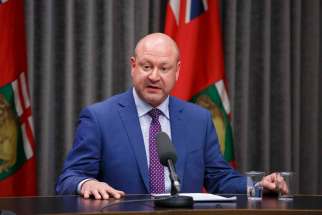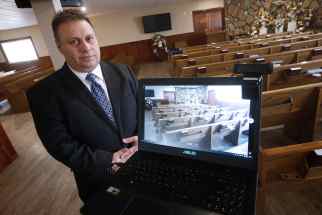Right here, right now: Canada’s chance
Read this article for free:
or
Already have an account? Log in here »
To continue reading, please subscribe:
Monthly Digital Subscription
$1 per week for 24 weeks*
- Enjoy unlimited reading on winnipegfreepress.com
- Read the E-Edition, our digital replica newspaper
- Access News Break, our award-winning app
- Play interactive puzzles
*Billed as $4 plus GST every four weeks. Offer only available to new and qualified returning subscribers. Cancel any time.
Read unlimited articles for free today:
or
Already have an account? Log in here »
Hey there, time traveller!
This article was published 17/03/2020 (1781 days ago), so information in it may no longer be current.
The window, says Canada’s chief public health officer, is narrow.
Dr. Theresa Tam continues this week to urge swift, decisive and disciplined action in order to give this country its best fighting chance to minimize the effect of the COVID-19 pandemic that has taken firm root and will inevitably tear deeply into Canadian communities in the coming weeks.
“This is our chance,” Dr. Tam said last weekend, “right here, right now. We need to act now and act together.”

The goal, as anyone who has monitored the non-stop coverage of the growing pandemic is likely aware, is not to stop the spread of the pandemic so Canadians can, in some imagined short time span, return to the familiar routine of their daily lives. Rather, the modest — and increasingly elusive — ambition is to “flatten the curve” of the pandemic, using responsible tactics such as “social distancing,” frequent thorough hand-washing and prudent cough/sneeze protocols to limit the speed with which COVID-19 is transmitted throughout our cities and provinces.
That the viral infection is spreading, and will continue to do so exponentially, is a foregone conclusion. The battle at hand is over how rapidly that exponential expansion will occur. If we don’t succeed, by following the advice and restrictions laid out by public health authorities, in flattening the curve, COVID-19 infections will spike precipitously as they have in Italy, where the health-care infrastructure has been overwhelmed by the number of severe and often-fatal cases with which it has been asked to contend.
If we do all the right things and, with the benefit of no small amount of good fortune, do flatten the curve, we might be able to keep the surge in COVID-19 cases within the abilities of health-care systems to handle them, and the pandemic might someday be remembered simply as a horrible, deadly plague that taught the world some daunting lessons.
In an interview Tuesday on CBC Radio, Dr. David Fisman of the Dalla Lana School of Public Health at the University of Toronto, said the steadily rising number of COVID-19 cases in Canada is far from an accurate reflection of the magnitude of the crisis.
“The difficulty with COVID-19 is that there are lags built into the surveillance systems,” he explained. “If you’re reacting to the numbers you see today, you’re already too late, because… by the time someone presents with significant illness, they were infected two weeks ago.”
In other words, it’s almost inevitable that every infected person will have spread the disease to others before realizing they were sick, so the confirmed-case totals of today are masking actual infection rates that are greater by compounded multiples.
All of which makes the messages delivered almost daily by Dr. Tam and other health authorities, as well as government officials at every level, more urgent with each passing hour. We cannot, as individual citizens or members of communities, afford to ignore the warnings. We must submit to each day’s added-on layers of restrictions and cautions.
So, again: social distancing. Avoid crowded places. Cancel travel plans. Work from home if you can. Stay home if you’re sick. Use common sense — a commodity that seems to become less common in times of stress.
And while we’re at it: Be kind. Be careful. Be patient. Be helpful and compassionate.
What we do next — “right here, right now,” as the doctor says — matters very, very much.




